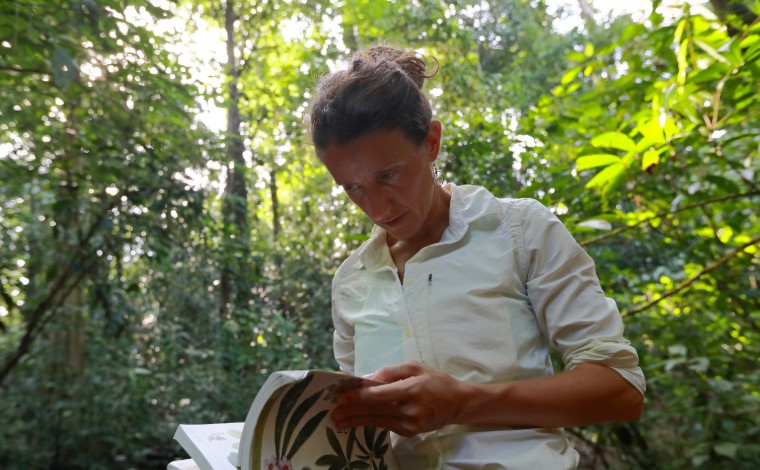A University of Stirling academic has played a key role in an international research project into what the future may hold for the world’s tropical forests, and how that data can shape governments’ policies.
Dr Daisy Dent, of the Faculty of Natural Sciences, worked with colleagues from the University of Leipzig, and the German Centre for Integrative Biodiversity Research, on the research that has just been published in leading journal Science.
Tropical forests play a globally important role in conserving biodiversity and storing carbon. Against the backdrop of climate change, their protection plays a special role and it is important to be able to predict future changes in tropical forests. In this study, the research team developed a model that predicts change in tropical forest biomass and tree species composition using five different ecological strategies. This allowed the team to look at how tropical forests may change in the coming decades, and even centuries.
Dr Daisy Dent said: "What is interesting about this study is that we accurately predicted change in the composition of a tropical forest that is home to many hundreds of tree species, by grouping them into just five functional groups or ecological strategies.
"Tropical secondary forests potentially could play a critical role in climate mitigation, by taking up atmospheric carbon and binding it into organic matter. The model presented in this study accurately predicts change in regenerating secondary forests, suggesting that a limited number of ecological strategies are sufficient to describe the recovery of tree communities following disturbance"

The loss of primary forests is most evident in the tropics, as these areas are cleared for farming – resulting in the loss of forest habitats and the release of carbon, as CO2, stored in the trees. However, when the cleared areas are no longer used, new ‘secondary’ forests grow on them and these then capture part of the previously released CO2.
The promotion of such natural forest areas can offer an inexpensive way of removing climate-damaging CO2 from the atmosphere, while also promoting biodiversity. Not all forests develop in the same way and the new research looks at a number of parameters, including: how quickly do the trees grow and how quickly do they die; and how many offspring do they produce, which then in turn ensures the continued existence of the species?
Using data recorded in Panama, over the last 40 years, Dr Dent and the team were able to show that trees pursue different strategies during their development. This includes differences in terms of their pace of life; while ‘fast’ species both grow and die quickly, ‘slow’ species grow slowly and reach an old age.
The team used a computer model to simulate how trees grow, die, produce offspring and compete for light. They allowed different configurations of the model to compete against each other; these contained 282 species from the Panama data or only a few selected ‘strategy types’. The species differed in only one or two respects; their pace of life and their stature. The respective model predictions were then compared with the observed development of regenerating secondary forests.
This research can help to inform policy around protection and management of tropical forests. Dr Daisy Dent added: "To support policy makers, it is essential that we have good predictive ability to understand future changes in tropical forests and how they may respond to further disturbance or climate change.”

